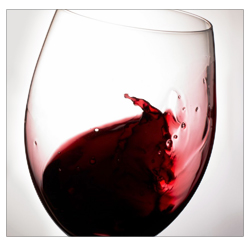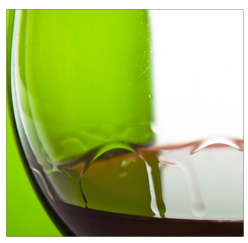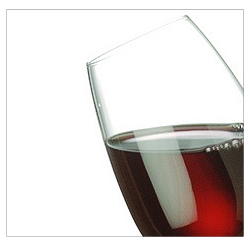HOW TO BEST ENJOY YO
R WINE
ADVICE & SERVING SUGGESTIONS FOR AN IMPROVED TASTING EXPERIENCE.
Naturally, after all the hard work that is spent refining the flavours that go into each wine, spirit and liqueur produced from each of our vintages, we have devised what we consider to be the most important considerations to get the upmost drinking experience from our wines. Drinking and enjoying wines doesn't have to be a complex process, but a few ground rules will soon turn you from a enthusiastic novice to a budding wine connoseur in no time. Salute!
1. STORING YOUR WINES
Ensure that you store your wines in a cool dark place that offers a controlled climate. This doesn’t mean that you require a climate control system, but fluctuating temperature will eventually degrade a wine. The following temperature recommendations are as follows:
Verdicchio - 12-14 Degrees
Lacrima, Rosso Piceno - 18 Degrees
Pinot Nero - 16-17 Degrees
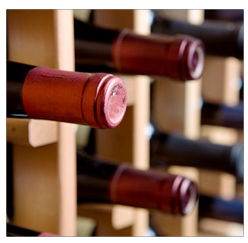
2. LET THE WINE BREATH
This is one of the easiest ways to improve the tasting experience of a wine. The reason a bottle should be opened, poured and allowed to breath before serving is because a well produced wine should be stored and bottled in a reductive/oxygen free environment to correctly preserve its flavours. This does mean however, that upon opening, a wine should be given the proper opportunity to react with its environment allowing oxidation of it's tannins and to deliver the full impact of the wines character. This process is mostly applicable to red wines that are full bodied and younger wines, although allowing most wines varieties to breath will be of some benefit. For obvious reasons the time will vary from type, country and vintage but as an idea for wines that require breathing, consider allowing anywhere between 20mins-1 hour.
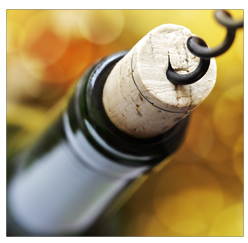
3. DECANTER THE WINE
Simply uncorking a wine will not provide enough surface area for your wine to correctly breath, therefore it is recommended to pour your wine into a decanter as this will allow your wine to open up more quickly. IMPORTANT: before decantering (or pouring into your wine glass) perform the sniff test to ensure that there is no remaining soapy smells that can interfere with a wines overall impact. Whilst in most cases this isn't likely overly affect the main tastes and aromas, the more subtle enjoyable character of a wines flavours could be lost here.

4. SELECT THE RIGHT GLASS
Selecting a great glass can make a real difference to a wine tasting for several reasons. For instance, the shape of a glass influences the air introduced into a wine upon tasting which alters the flavours and aromas introduced to the flow of a wine. The rim thickness and variation of a glasses inward curve can play its role in affecting the way a wine's flow is directed onto different parts of the tongue and it's respective taste sensations and the intensity of airflow that is interjected into each taste. Furthermore, a finer glass really helps to improve the wines flow during the sampling stage of the tasting experience.
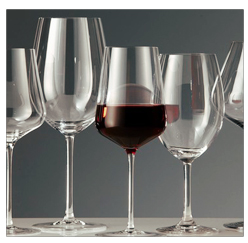
5. LOOK AT THE WINES COLOUR
Next we'll look at some of the techniques that can be used when tasting a wine to better understand it's character and composition. These tools can then be used to make comparisons with performing future tastings etc. Begin by observing the wine's colour, by tilting the glass to the longest curve gradient of your wine glass and positioning your line of sight against a light background i.e. table cloth, white wall etc. Note the clarity, intensity, depth or saturation of colour from it's shallowest reference point and how it progresses through its depth.
6. SWIRL THE WINE IN YOUR GLASS
Spiraling your wine increases it's surface area encouraging oxygenation as well as increasing it's aromas. After a wine has had time to breath, this essential tool allows a quick development of aroma's and flavours that better allow for comprehension of a wines character. Deeper glasses with a more pronounced inner curve allow for a more versalite and varied swirling technique.
7. WINE VISCOSITY
After initially swirling, observe the arches that are created on the sides of your glass. This time taken for the arches to run down a glass are usually a good indicator of more alcoholic and/or full bodied wines. For best results, ensure the glass is well cleaned and dried before pouring
8. USING YOUR NOSE
Whilst experimenting with swirling technique, hold your nose a few inches from the glass, then let it more into the glass. This provides variations of oxygen and the wines aromas to detect different scents from the wine. Also experiment further with variations on sniffing techniques here ranging from long and gentle inhalation to short and sharp bursts.

9. TASTING THE WINE
When tasting a wine, ensure to sip an amount that can guided around the mouth, exposing it to all of your tastebuds to provide detailed insight into the character of its flavours. At this stage, also pay attention to the texture and tactile sensation of the wines movement as well as its weight and body. As a secondary measure consider introducing air into the tasting. Consider aspiration i.e. the drawing of air into the mouth with pursed lips, breathing out through the nose followed by slurping a wine when introducing it into the mouth. Once again experiment with both techniques based around duration and intensity.
10. CONSIDER THE AFTERTASTE
Don't forget to hone in on how your wine finishes. There are many interesting nuances and transitions of flavours to be enjoyed in the 'finish' of a well produced wine that if correctly understood could be the reason you regard a preferred wine so highly.
9. PAIR CORRECTLY WITH FOOD
The delightful characteristics of a wine can be missed altogether if not paired well with food. However, the right pairing can turn a good meal into a superb dining experience. To assist with this, we have a number of suggested plates to provide an idea on how to best complement our wine varieties in the product menu area of our site.
The previously mentioned techniques allow for comprehension of subtle details of a wines composition and its aromas to help refine what qualities might be expected from the tasting experience. Whilst wines can differ considerably from a percieved aroma within the context of it's palate, a wine tasting quickly becomes a journey of hidden scents and aromas that can with practice become unlocked and enjoyed.







